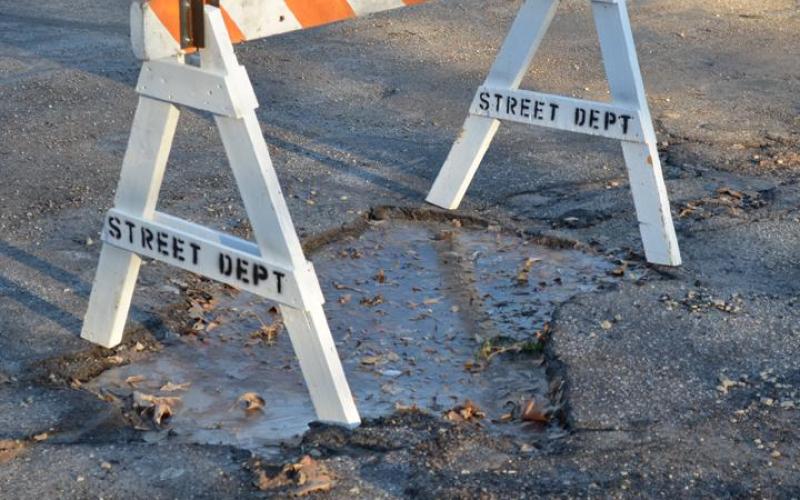Wet winter leaves streets littered with potholes
The snow and the ice are gone, for now, but left behind are city streets littered with potholes.
Concordia has experienced the third wettest winter on record, with 46.9 inches of snow, along with rain, freezing rain and sleet. All of this has taken a toll on our city thoroughfares.
Snow and ice melts during the day and settles into cracks and holes in the pavement. It then refreezes during colder nighttime temperatures. The ice exerts tremendous force, great enough to fracture concrete and asphalt, and lift it away from the subbase, causing potholes to form as vehicles are driven over the heaved pavement.
Concordia Public Works director, Ron Copple, said this is as bad he has ever seen it when it comes to potholes.
“I have trash trucks getting buried in streets, and have had to barricade alleys because it is so soft,” Copple said, “It is pretty widespread. People probably notice them more on the major streets, like going to the schools.”
City crews repair potholes year-round, but they have to be clean and dry for the patch to effectively bond to the surrounding pavement.
Copple said that crews were going to attempt to begin patching the plethora of potholes on Friday.
“I am going to try to get some of the major streets first, and then I will get into the residential areas after that and then the alleys after that,” Copple said, “It is kind of overwhelming right now.”
Copple said that getting started on the patching process will take a little longer because of the moisture.
“We are going to have to clean the water out of the holes, and then you edge them and tack them. It depends on how much moisture is in there, you may have to dry them a little bit. And then you patch them,” Copple said.
Along with potholes, the city crews will also be repairing pavement failures that occur when the subbase becomes saturated and freezes. As it thaws, and additional moisture seeps downward, erosion can occur. As heavy vehicles are driven over the saturated subbase as it thaws, the gravel, rock or asphalt millings are displaced to the sides, resulting in rutting of the streets, alleys and driveways.
City crews will address street failures on a case-to-case basis.
Widespread, yet shallow, surface pavement failures can be similarly addressed to those of potholes.
Significant failures of the subbase may require crews to remove a section of the pavement and subbase to replace it.
How long it takes to repair the city streets is going to be determined by weather conditions.
Along with repairing damage to the asphalt streets, the city crews will also be grading the gravel roads within the city limits.
“If it doesn't rain any, it is going to take two months,” Copple said, “It is just hard to judge.”
Snow removal during this wet winter has already taken a toll on the city's budget, and street repairs will just add to that burden.
“Like I told Amy (Lange, city manager), these potholes are more time consuming and labor intensive than what the material is going to cost,” Copple said, “I am going to use several tons of it (patching material).”
Copple said he is currently paying $80 per ton for the cold mix that he is currently purchasing from Hall Brothers, Inc. in Marysville, to repair the streets. That could range up to $125 per ton if he has to get it somewhere else.
Lange posted on the city's Facebook page “Please rest assured potholes will be filled and street failures will be addressed: however, some planned alley overlays may be delayed.”
“On behalf of the City Commission and the City staff, we thank you for your patience as we work to repair our streets this year,” Lange posted.


